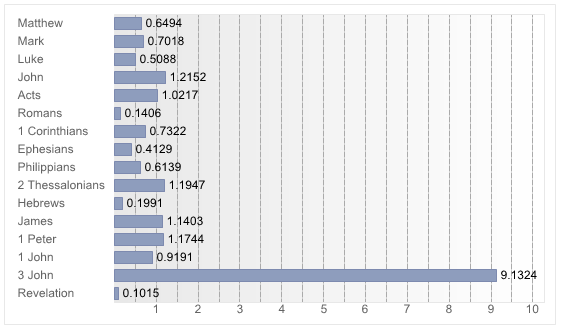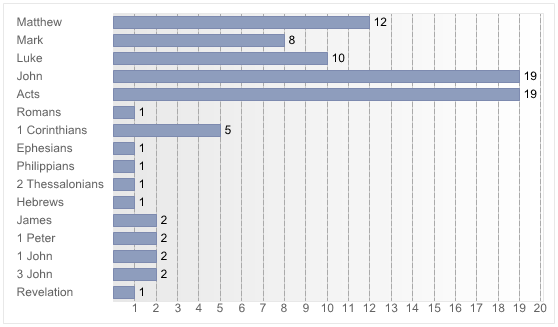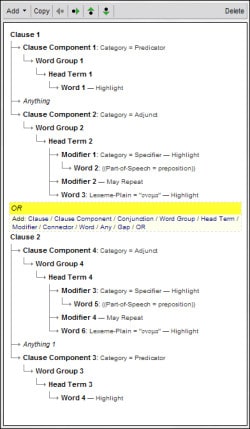The other day I was listening to a song that was repeating the phrase “in the name” in the context of the name of Christ. I wondered: What sorts of things in the New Testament are done “in the name”?
To OpenText.org-ify it a little more: Not just where a prepositional phrase with ὄνομα may occur, but what are the verbs connected with instances of a prepositional phrase that has ὄνομα as the prepositional object?
I’m sure, by now, you know the answer. It is a syntax search. And based on the response to my last syntax search example, I’ve provided another video (Flash, 10 megs, with sound), narrated by yours truly, along with further written description below. Be sure to check out the description, I tell you how to generate some nifty graphs from search results (this isn’t in the video!)
Also note that the approach used in this syntax search is incredibly similar to the one discussed in a previous blog article about syntax and morphology searching.
Here’s a picture of the query we want to develop. You’ll note it is fairly similar in concept to the subject/predicator agreement search I did before but different in that instead of a subject we’re searching for an adjunct component.
So, what is an Adjunct? According to the OpenText.org annotation, it is:
An Adjunct (A) of a clause is a word group or the word groups that modify the predicator, providing an indication of the circumstances associated with the process. Common adjuncts are prepositional and adverbial phrases (adverbs) and also embedded adverbial clauses. With relation to the process of the clause, adjuncts provide answers to questions of the type where?, when?, why? and how?.
Porter, S., O’Donnell, M. B., Reed, J. T., Tan, R., & OpenText.org. (2006; 2006). The OpenText.org Syntactically Analyzed Greek New Testament Glossary. Logos Research Systems, Inc.
So we can see that if we’re interested in prepositional phrases functioning at the clause level, we need to factor the Adjunct into our search. Since we’re looking for where a prepositional phrase modifies a verb, for the syntax search we’ll specify the following:
- A predicator (verb) that contains a word group, that contains a head term, that contains a word. Highlighting will be specified for this word so we can see the verbs attached to the adjunct in the search results.
- An adjunct that contains a word group that contains a head term. The head term has a modifier that is a specifier; that specifier contains a word that is a preposition. The head term will also have a word that has the lexical form of ?????
Note: it is so much easier to talk about this than write about it; the video discusses the above structure in a little more detail.
- Video: Flash, 10 megs, with sound
What does this look like? Well, rather than pop up screen captures, how about some graphs? I just clicked the “Graph Bible Search Results” link from the Syntax Search Results and generated the following graph, showing “Number of Hits in Book / 1000 Words in Book”:

Or a more traditional graph, not normalized against book length, simply plots number of hits per book:

Once you get the data, you can do all sorts of stuff with it. Either way, The Gospels, Acts and First Corinthians seem to stand out as the places where this sort of language is used most frequently, though 3 John is a very short book with two instances so it may be good to examine as well.





